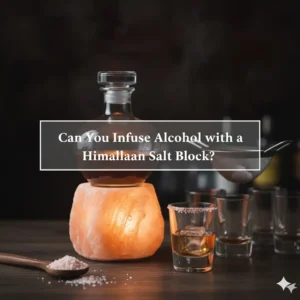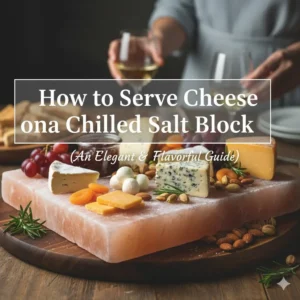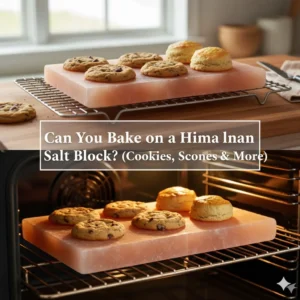Himalayan salt block cooking pairs natural minerals with culinary technique, turning everyday ingredients into elevated dining experiences. These solid pink slabs absorb and retain heat or cold, allowing chefs and hosts to sear, grill, or serve foods while subtly enhancing flavor. This article outlines where to find leading in-person classes, plus practical guidance for organizing your own salt block workshops and dinner events at home—combining education, creativity, and taste in one experience.
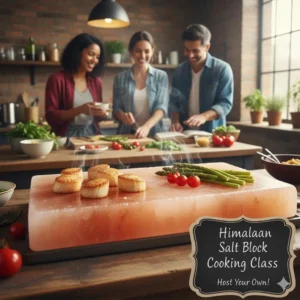
The Meadow Himalayan Salt Block Cooking Classes (New York)
The Meadow in New York hosts in-person Himalayan salt block cooking classes led by Mark Bitterman, a noted authority on artisanal salts. These sessions provide a practical introduction to searing, grilling, and seasoning foods on authentic pink Himalayan salt slabs.
Designed for cooks and hosts seeking refined presentation and technique, the workshop explores how various salts affect flavor and how to handle both heated and chilled blocks safely for polished, restaurant-quality results.
Cozymeal Himalayan Salt Block Workshop (Tucson, AZ)
The Cozymeal Himalayan Salt Block Workshop in Tucson, Arizona, offers a guided, in-person cooking experience featuring both heated and chilled salt blocks. Participants learn to prepare seafood, steak, and desserts while gaining insight into how temperature influences flavor development and texture.
The session also includes instruction on safe handling and care, along with guidance for building creative menus tailored to salt block techniques. It’s an engaging, skill-focused workshop ideal for those looking to host distinctive, interactive dining experiences at home or within hospitality settings.
Premium Himalayan Salt Blocks for Culinary & Hospitality Brands
Partner with Jilin Ever Creation to source authentic pink Himalayan salt blocks that elevate flavor and presentation. Customize dimensions, packaging, and branding to fit your business requirements while benefiting from global delivery and adaptable order volumes.
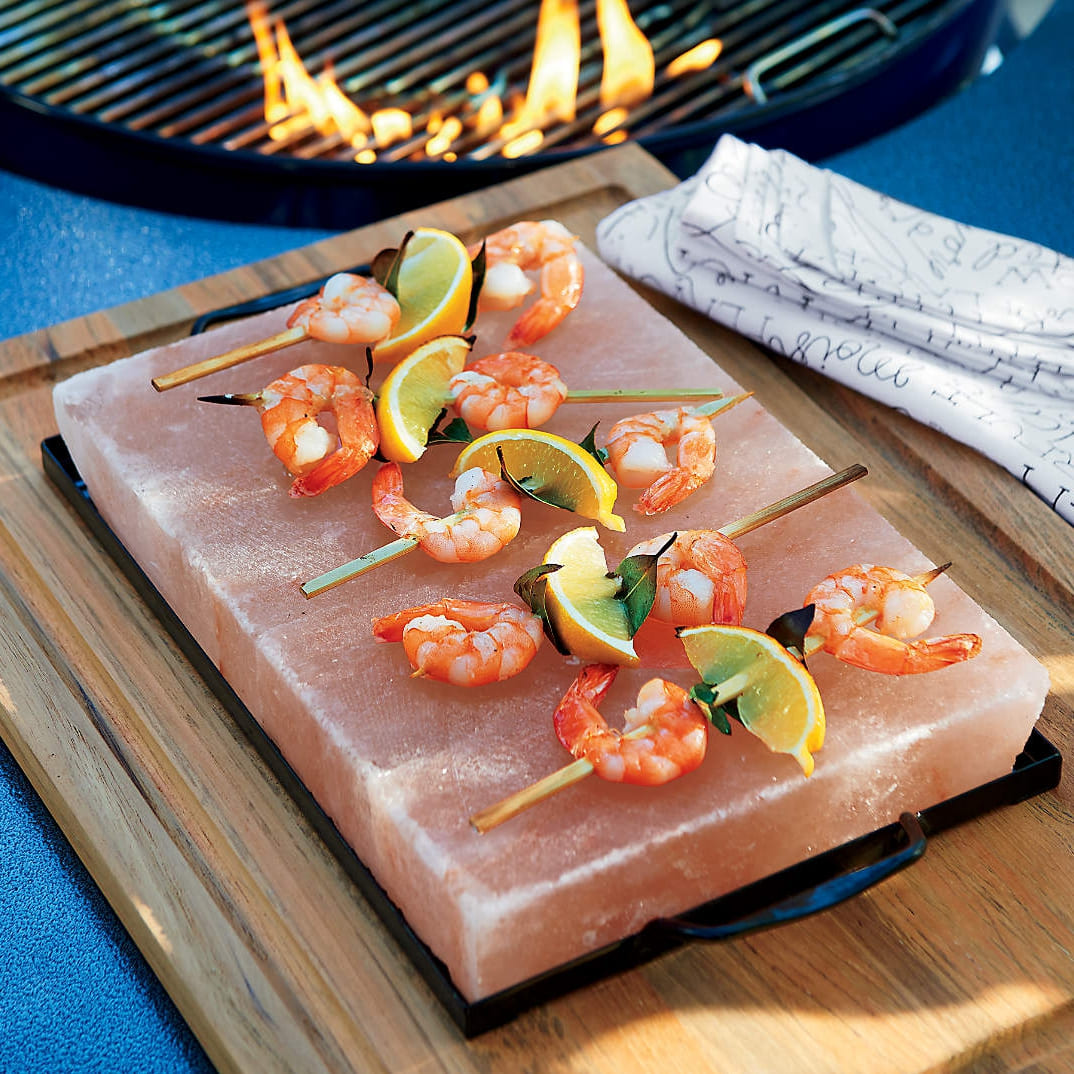
Online Resources for Hosting Your Own Salt Block Class
Online tutorials make it simple to lead a Himalayan salt block cooking session at home, even without formal training. Educational channels such as Sustainable Sourcing provide step-by-step videos on heating, cleaning, and maintaining salt blocks, giving hosts the confidence to guide each stage safely.
Hosting your own workshop adds flexibility—select the menu, set the class size, and let guests learn through participation. It transforms a dinner party into an engaging, hands-on culinary experience that suits any schedule.
For consistent results, use authentic Himalayan salt blocks from reputable suppliers and verify all recipes or handling instructions from credible sources. Attention to these details ensures flavor integrity, safety, and a rewarding experience for every participant.
How to Prepare and Host a Salt Block Cooking Party
Hosting a salt block cooking party combines the focus of a hands-on workshop with the social atmosphere of a shared meal. Plan for one Himalayan salt block per four to six guests to provide ample cooking space without crowding. Use high-quality blocks—heated for grilling or chilled for serving desserts—to highlight the full range of salt block cooking methods.
Design a menu that encourages experimentation. Seafood, steak, sliced vegetables, and caramelized fruit cook beautifully on heated blocks, while chilled options like sashimi or frozen desserts add balance and visual appeal. A variety of dishes keeps guests involved and ensures an engaging experience.
Preparation is key to a smooth event. Source the blocks early, heat or chill them gradually, and open the gathering with a brief demonstration. After the meal, allow the blocks to cool completely before scraping away residue and wiping them clean for reuse. The result is a memorable, interactive dining experience where every guest takes part in the process.
Understanding Heated vs. Chilled Himalayan Salt Blocks
Himalayan salt blocks perform distinct culinary functions depending on temperature. Heated blocks excel at searing meats, seafood, and vegetables, imparting a light mineral flavor that accentuates natural taste. Their even heat retention makes them ideal for professional demonstrations and gourmet cooking classes.
Chilled blocks are equally effective for serving cold dishes such as sashimi, fruit, or desserts. Their smooth surface seasons subtly while maintaining freshness and presentation appeal. For longevity, always adjust temperature gradually, minimize moisture contact, and use supports like grill stands or cooling trays to ensure safe handling and attractive display.
Safety and Maintenance Tips for Himalayan Salt Blocks
Proper care extends the lifespan of your Himalayan salt block and ensures it remains safe for both cooking and serving. After each use, let the block cool fully, then wipe it with a slightly damp cloth to remove food residue. Avoid soaking or using soap, as water and detergents can dissolve the salt and weaken its structure.
Always heat and cool the block gradually to minimize the risk of cracking from sudden temperature shifts. Store it in a dry area on a soft cloth to prevent moisture absorption, and apply a light reseasoning as needed to maintain its smooth surface and consistent flavor performance over time.
Frequently Asked Questions About Salt Block Cooking Classes
Are there cooking schools that offer Himalayan salt block classes?
Yes. Culinary schools and event venues such as The Meadow in New York and Cozymeal in Tucson, Arizona, host Himalayan salt block workshops. These sessions are typically led by chefs who demonstrate heating, chilling, and serving methods suited to both beginners and experienced cooks.
What dishes are typically featured in salt block cooking classes?
Participants often prepare items that benefit from steady heat and subtle mineral seasoning, such as seared steak, shrimp, or scallops. Many instructors also highlight chilled applications—serving sashimi, fruit, or desserts on a cooled block—to illustrate contrasts in flavor and temperature.
How many people can cook on a single salt block at once?
A large block, approximately eight by twelve inches, comfortably accommodates two to three people cooking simultaneously. For group classes or dinner party setups, several blocks can be arranged to ensure everyone can participate actively.
Is salt block cooking appropriate for dinner parties?
Yes. Cooking on Himalayan salt blocks transforms a meal into an interactive experience where guests prepare their own portions, similar to a contemporary fondue setting. It encourages conversation, creativity, and shared participation—ideal for social gatherings.
What essentials are needed to host a successful salt block cooking class?
Begin with durable Himalayan salt blocks, a reliable heat source, and simple, fresh ingredients suited to the surface. Include utensils, cleaning tools, and reputable online guides or videos covering proper heating and maintenance. To showcase versatility, plan a menu that includes savory, chilled, and sweet courses.
Your Takeaway
Cooking on Himalayan salt blocks transforms an everyday meal into an engaging, sensory experience. Beyond technique, it’s a way to experiment with heat, texture, and natural mineral flavor while sharing the process with friends, guests, or students.
For guided learning, in-person workshops in cities like New York and Tucson cover the essentials of heating, chilling, and presentation. Those seeking flexibility can explore online tutorials from reputable chefs and manufacturers to learn at their own pace.
Consider hosting your own salt block dinner or cooking session. It’s an inventive way to connect people, build skills, and celebrate fresh, balanced flavors straight from the block.:


